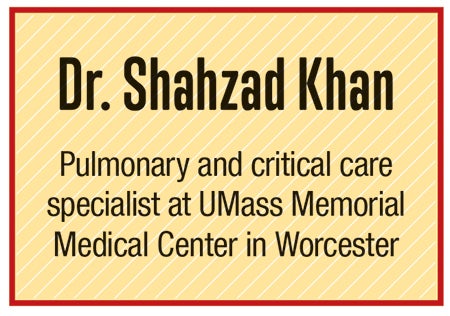Vaping has been out of the headlines for a while, as the nation’s attention turned to a more urgent respiratory issue known as COVID-19.
Get Instant Access to This Article
Subscribe to Worcester Business Journal and get immediate access to all of our subscriber-only content and much more.
- Critical Central Massachusetts business news updated daily.
- Immediate access to all subscriber-only content on our website.
- Bi-weekly print or digital editions of our award-winning publication.
- Special bonus issues like the WBJ Book of Lists.
- Exclusive ticket prize draws for our in-person events.
Click here to purchase a paywall bypass link for this article.
Vaping has been out of the headlines for a while, as the nation’s attention turned to a more urgent respiratory issue known as COVID-19. But in the nearly two and a half years following a new Massachusetts Tobacco Control Law restricting the sale of flavored vaping and tobacco products, e-cigarettes are still widely used, especially among youth.

Central Massachusetts HEALTH sat down with Dr. Shahzad Khan, a pulmonary and critical care specialist at UMass Memorial Medical Center in Worcester, to discuss the use of vaping products in Massachusetts – and where we go from here.
What have you seen since the new law passed in 2019?
A couple of years ago, vaping was in the headlines, but then obviously COVID came to the forefront. The entire medical community and the world focused on that, rightfully so.
Now that things are getting back to normal, it seems that vaping may have decreased in some ways, but unfortunately there is data coming out from the U.S. Centers for Disease Control and Prevention showing specifically in the younger population, there’s been an uptick over the last several years with regards to use of vaping products.
That’s obviously worrisome, because depending on the product they’re vaping – some of them contain nicotine, some of them contain marijuana – it’s obviously addictive and vaping itself can have harmful effects as well.
How young are we talking?
A report on e-cigarettes from the U.S. Surgeon General looked at e-cigarette usage in 2011 compared to 2018. Now obviously that’s a little behind the times, but it does show an upward slope of patients they surveyed there, and the ranges are high school all the way to middle school.
What do we know about long-term effects of vaping on kids’ lungs?
With the nicotine products, there’s a worry for addiction, and the CDC does have a good amount of information about how that could cause different-than-typical responses with anxiety and such. With regards to lungs, there are a variety of issues vaping can cause in the short term and the long term.
Since vaping is still relatively new, medicine takes several years to gather data for long-term effects, but in the short term, you have anything from inflammation, or short-term damage to the lungs, or potentially symptoms such as coughing or chest tightness. If someone has a pre-existing pulmonary condition like asthma, it could cause a flare up.
Long-term, it depends on usage and severity of disease. Someone who has more severe disease or is using it longer is more likely to have issues, whether it’s potential inflammation or scarring.
That data is still not 100%, but the short-term data is pretty robust at this point.
What about adults?
Initially when vaping was created, people were using it as a way to stop smoking traditional cigarettes. It wasn’t an approved method, or a method that was recommended, but a lot of times people were using both e-cigarettes and regular cigarettes.
In my patient population, most of them were cigarette smokers, and they still smoke cigarettes. Occasionally I’ll get an e-cigarette user or vaper, but it’s unfortunately more of a population that’s a little bit younger.
What do you recommend as a course of action for trying to stop?
Getting the word out is important. I know in the past faculty members from my division have gone out to local schools to talk about vaping and the harm it can cause. If you’re a kid and you’re able to safely and comfortably communicate with your parents, or whoever is caring for you, and having those conversations, I think that’s one way.
There’s so much in society that will promote one thing versus another, but having a safe place to talk about it would identify, “Maybe this is not what it’s cut out to be, or as cool as I think.” Just talking about it and making people aware of, “Hey this can potentially hurt you” can go a long way for kids.
This interview was conducted and edited for length and clarity by HEALTH correspondent Laura Finaldi.

